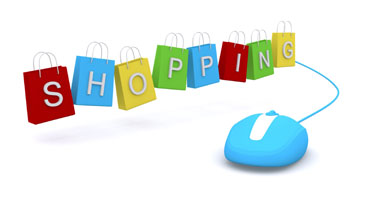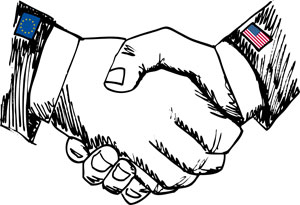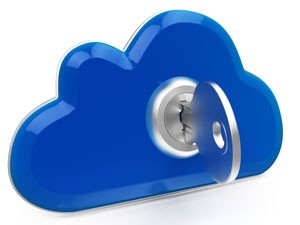Technology for Christmas
 ‘Tis the Season to be Jolly and show how festive technology can be. Technology certainly does not ignore the fact that billions of people are celebrating the Holidays. Christmas cheer is being spread within mobile apps, Websites, and Blogs. Even Christmas decorations are redesigned using technology. Also, Google has done a lot to show their holiday cheer this year. Check out some of the ways you can enjoy all this festive technology for Christmas.
‘Tis the Season to be Jolly and show how festive technology can be. Technology certainly does not ignore the fact that billions of people are celebrating the Holidays. Christmas cheer is being spread within mobile apps, Websites, and Blogs. Even Christmas decorations are redesigned using technology. Also, Google has done a lot to show their holiday cheer this year. Check out some of the ways you can enjoy all this festive technology for Christmas.
Mobile Applications
Did you know that Christmas is also the unofficial Developers App Day?
 According to Flurry, 328 million apps were downloaded on Christmas Day last year in the United States. This is not too surprising though. With mobile devices being one of the most popular gifts to give during the holiday season, it is only natural that people will be downloading apps, often sharing them with friends and family.
According to Flurry, 328 million apps were downloaded on Christmas Day last year in the United States. This is not too surprising though. With mobile devices being one of the most popular gifts to give during the holiday season, it is only natural that people will be downloading apps, often sharing them with friends and family.
App developers work tirelessly leading up to the holiday season. This past September, developers were already hard at work polishing their apps for the Christmas rush. Some developers have even added exclusive seasonal content.
App Icon Festive Dress up
I’m sure you have noticed your mobile apps updating their icons to something festive for the Holidays. This is one way app developers celebrate the season.
Here are some popular apps showing off their holiday spirit with a festive new icon:
 |
 |
 |
 |
 |
 |
Photos from: itunes.apple.com/ and play.google.com/
Top Christmas Apps this Season
A Charlie Brown Christmas
Interactive storybook narrated by Peter Robbins (the original Charlie Brown voice).
NORAD Tracks Santa
Apple and Android Free
Track Santa throughout the world and see what he is doing and how you can help him.
Christmas Story Books
Apple and Android Free
Collections of Christmas stories such as “A Christmas Carol” and “Twas the Night Before Christmas”.
ElfYourself
Android Free with extras to buy
Turn your friends and family into elves and make them dance to a Christmas song.
Talking Santa
Apple and Android Free
Talk to an animated Santa. Tap the screen to make him respond in various ways.
Christmas Radio
Apple and Android Free
Choose from 50 unique Christmas-themed Internet radio stations.
Websites and Blogs
Make your Website Festive
Use WordPress Plugins – Add things easily to your WordPress Site such as Advent Calendars, Countdowns, Holiday Popup Messages, and Christmas animated images to spruce up your website for the holidays.
Don’t have WordPress? Use these ideas to add extra flair to your site with some simple code.
Creating a Landing Page – Create a temporary landing page for your site as just a way to wish happy holidays or to highlight a promotion on your site. Make it easy to to dismiss so your visitors don’t get frustrated trying to bypass it.
Make a Festive Logo – Take your signature Logo and dress it up to make it festive. Use Photoshop, Gimp, or just hand it off to your graphic designer. It does not need to be a big change, just some extra flair your customers will notice.
Don’t Forget Your Social Media – Take all of what you have done and incorporate it into your social media. Change your profile picture to your the festive logo. Change your cover photo to a matching image. Then send out a post telling your followers to check out the changes you made to get more attention and clicks to your website.
Christmas Lighting
Technology Controls Christmas Lights
The new thing is to make a light show on your house with your Christmas Lights. Control when the lights turn on and off and even coordinate it with music. You can do this using computer software or even a smartphone app.
LumenPlay
For the Advanced create a light show using Raspberry Pi
Check out the DIY instructions
How Google Celebrates the Holidays
This year Google has been showing off their holiday spirit with Christmas logos, a Santa Tracker app, and more.
- This holiday season, Google is celebrating with new, festive logos:
 December 24 |
 December 23 |
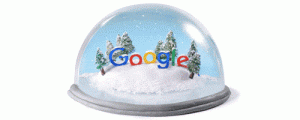 Winter Solstice December 22 |
|
- Google is also famous for hiding Easter eggs depending on what you search. To celebrate the holidays they created Easter eggs if you type “Christmas“, “Kwanzaa“, and “Hanukkah“
- Santa Tracker – You can play on your phone or on your desktop. Play Christmas related Games and Learn about Christmas too.
- Google Spotlight Stories Presents: Special Delivery
- A company named Boston Dynamics, with Google X, used their tech skills to create robotic reindeer to pull a sleigh.
Online Shopping Security Tips for the Holidays
 It’s that time of year again when everyone is trying to find the perfect presents for their friends and loved ones. This year’s online sales are sky-rocketing from customers shopping online on days such as Thanksgiving, Black Friday, and Cyber Monday.
It’s that time of year again when everyone is trying to find the perfect presents for their friends and loved ones. This year’s online sales are sky-rocketing from customers shopping online on days such as Thanksgiving, Black Friday, and Cyber Monday.
Customers should consider some of our online shopping security tips before exchanging their personal information and money through the Internet. Learn where to shop online, how to be secure, and best practices to keep yourself safe.
Where to Shop
Use Familiar Sites – Stick to the brands you know like amazon.com, costco.com, or similarly established sites. If you don’t recognize the store you’re shopping at, do some searching around to see if you can find reviews (on a different website) before making a purchase.
 Look for slightly misspelled words in the domain name. Often, hackers will register similar domain names and create a doppelganger site to try and steal credit card information from unsuspecting shoppers.
Look for slightly misspelled words in the domain name. Often, hackers will register similar domain names and create a doppelganger site to try and steal credit card information from unsuspecting shoppers.
Use Mobile Apps – These days, there is not much functional difference between using a mobile device or a desktop computer to shop online. The best practice on a mobile phone is to use a retailer’s app rather than using the phone’s web browser.
- Learn more about safe mobile shopping.
 Be Careful With Email – During the holidays you will probably get several emails promoting holiday deals. This increased traffic can present an opportunity to scammers to send you a nefarious link dressed up in an attractive email. Instead of clicking any links directly from an email, type the store’s URL directly into your browser.
Be Careful With Email – During the holidays you will probably get several emails promoting holiday deals. This increased traffic can present an opportunity to scammers to send you a nefarious link dressed up in an attractive email. Instead of clicking any links directly from an email, type the store’s URL directly into your browser.
Never give out your credit card number via email.
- Learn more about scam emails
How to be Secure
Computer Protection – First and foremost you need to protect your computer in case malware does leak through. You should also make sure your web browser and operating system are up to date. Software updates contain essential security patches.
 Phone antivirus apps
Phone antivirus apps
- Android Antivirus Apps
- iOS Antivirus Apps
Desktop antivirus
Check If It’s Secure – Any site that is taking credit card information should have SSL (secure sockets layer) encryption installed. To be sure your connection is encrypted using SSL, take a look at the URL in your browser.
A secure page will start with HTTPS:// instead of HTTP://
Typically, there will be an icon of a locked padlock either In the status bar (at the bottom of your web browser) or in the address bar (right next to the URL). The entire site does not necessarily need to be secured in this fashion, but it is essential on any page where you are asked to submit any personal information.
![]()
Give Out Minimal Information – No online shopping site needs you social security number or your birth date. These are two things you should never give out, especially when combined with your credit card information. If this information gets in the wrong hands you might have your identity stolen.
Use Strong Passwords – A lot of online shopping sites require you to have an account. The stronger your password, the less likely someone can hack into your account and use your saved card information.
The best advice for this is to not use the same password for all of your e-commerce accounts. If you happen to get hacked on one site, most likely the attacker will try the same password on other sites.
- Learn more about strong passwords.
Best Practices to Stay Safe
Check Statements Regularly – Many wait to look at their credit card and bank statements until the end of the month. During the holiday season, if you are shopping online often you should regularly check up on your transactions. This will give you time to catch any fraudulent charges. Most banks and card issuers give you 30 days to report any problems. If you don’t notify the bank within that period, you may be liable for any fraudulent charges made in your name.
 Skip the Gift Cards – Gift cards are always a common present to give around the holidays. Many sites like to auction off gift cards which end up having little or no funds on them. Skip buying them online and always buy gift cards straight from the source.
Skip the Gift Cards – Gift cards are always a common present to give around the holidays. Many sites like to auction off gift cards which end up having little or no funds on them. Skip buying them online and always buy gift cards straight from the source.
Print or Save Receipts – As with in-store purchases, you should receive some sort of payment receipt. Most likely you will receive an emailed receipt with a confirmation of your purchase. It is wise to save these documents in case something goes wrong.
 Don’t Shop Online Publicly – If you are out and about, turn off your public Wi-Fi and use the data on your phone or wait until you are using a trusted private network before making a purchase.
Don’t Shop Online Publicly – If you are out and about, turn off your public Wi-Fi and use the data on your phone or wait until you are using a trusted private network before making a purchase.
Most public networks and Wi-Fi hotspots do not encrypt your data, making identity theft much more likely.
Use The Too Good To Be True Rule – If it sounds too good to be true then it most likely isn’t true. If you are getting an extremely good deal or something for free then it’s almost certainly a scam.
Check out Mcafee’s 12 scams of Christmas.
Sources:
http://www.pcmag.com/article2/0,2817,2373130,00.asp
Email Newsletters in the Digital Age
In a digital age, sending out email newsletters instead of paper newsletters has become much more popular. And why not? The marketing potential of cheap, nearly instant communication with interested customers is difficult to overstate.
The content within your newsletter can greatly affect your readership and business. Read on to learn what to include in your newsletter and how to organize it to more effectively generate leads.
Digital Versus Paper Newsletters
Digital Newsletter Pros:
Cheaper – Everyone is looking for a way to save money and sending out an electronic newsletter can cost much less than running a traditional mail equivalent.
Easy Distribution – Email is much easier to manage than paper mail. Email address lists are usually easier to keep up to date than mailing addresses. And with near instant delivery, you can send out newsletters much more frequently than by paper mail.
Better Targeted Audience – Since a user must opt in, you are marketing to a more targeted, engaged audience.
 Gain More Audience – A digital newsletter has a better chance of being shared than its paper equivalent. An online share opens your marketing up to a much wider audience, which drives more traffic to your website.
Gain More Audience – A digital newsletter has a better chance of being shared than its paper equivalent. An online share opens your marketing up to a much wider audience, which drives more traffic to your website.
Use of Statistics – Most email marketing services provide statistics including open, click, bounce, and unsubscribe rates. These statistics can help you better tailor your content to your audience. If your open rate is low maybe you need a more interesting and eye-catching subject line, for example.
Digital Newsletter Cons:
Easily Ignored or Lost – Amongst the barrage of emails people receive on a daily basis, your newsletter can easily be overlooked.
 Viewed as Spam – Your subscribers’ email provider might tag your newsletter as spam. It’s a good idea to encourage your subscribers to add your newsletter’s FROM address to their address book. This prevents email programs from flagging your newsletters as spam.
Viewed as Spam – Your subscribers’ email provider might tag your newsletter as spam. It’s a good idea to encourage your subscribers to add your newsletter’s FROM address to their address book. This prevents email programs from flagging your newsletters as spam.
What should be in your Newsletter
90% Educational and 10% Promotional 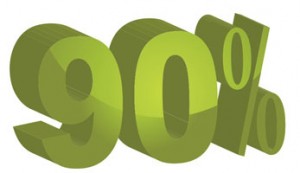 – Promoting yourself too much can be a major turn off. If your newsletter constantly makes a subscriber feel pressured to buy, they will likely unsubscribe.
– Promoting yourself too much can be a major turn off. If your newsletter constantly makes a subscriber feel pressured to buy, they will likely unsubscribe.

Instead, include content that educates the subscriber or has relevant information that ties in with the items/services you are promoting.
Creative Subject Lines – A good subject is the first thing people see. Interesting subject lines entice users to click. Read some tips for creating a good subject line.
Another option is to use the same subject line each time you send out your newsletter. This may seem boring but can build a sense of familiarity with your subscriber base so they do not accidentally delete your messages.
One Main Call to Action – Most of the time you will have many call-to-actions within your newsletter, but make sure to highlight only one of them so as no to overwhelm your readers.
Straight Forward Design – Stay away from long paragraphs and bullet your information. This makes it easier to read and keeps your audience interested.
 Shares, Links, and Unsubscribe – Include an easy share button. Many times if your audience likes your content they will want to share it.
Shares, Links, and Unsubscribe – Include an easy share button. Many times if your audience likes your content they will want to share it.
Have links to your website and any other websites you may have a partnership with.
Always give your readers the option to unsubscribe. If your unsubscribe feature does not work, it will frustrate your subscribers and probably get you blacklisted for violating the CAN-SPAM Act.
 Contact Information – Have your business contact information prominently displayed in your newsletter.
Contact Information – Have your business contact information prominently displayed in your newsletter.
Photos – Have a balance between photos and text. Having too many of either can make your email look like spam. Try to spread your photos out and link them back to a relevant web page.
Let Appletree Mediaworks Help you
Need help designing, managing, and sending your newsletter?
Let Appletree Mediaworks take care of your newsletter. We will work with you as often as needed to gather content, design the template, manage your email list, and schedule your newsletter. We stay up with all the latest technology trends and laws so you can focus on running your business.
[button size=”normal” link=”https://appletreemediaworks.com/contact-appletree/” target=”_blank” color=”blue” align=”left”]Contact Us Today[/button]
[space5]
Safe Harbor Rule Invalidated, How it Affects You
The Data Safe Harbor Rule
 The Safe Harbor Rule was established in 2000 between the European Union (EU) and the United States (US). This agreement allowed businesses to legally funnel information across the Atlantic. Such data is normally transferred during global commerce, email correspondence, and even social media communication. Europe has stricter privacy guidelines to protect its citizens than the US does. Under the Safe Harbor agreement, US companies could “self-certify” that they met Europe’s stricter privacy standards in order to gain access to European markets.
The Safe Harbor Rule was established in 2000 between the European Union (EU) and the United States (US). This agreement allowed businesses to legally funnel information across the Atlantic. Such data is normally transferred during global commerce, email correspondence, and even social media communication. Europe has stricter privacy guidelines to protect its citizens than the US does. Under the Safe Harbor agreement, US companies could “self-certify” that they met Europe’s stricter privacy standards in order to gain access to European markets.
In early October, the European Court of Justice ruled that the US approach to domestic surveillance was not up to European standards. Basically, this happened because the court was concerned that the US would compromise the data of European citizens swept up in our country’s growing mass surveillance machine. Consequently, this ruling made the Safe Harbor pact invalid virtually overnight.
The Safe Harbor Agreement 2.0
The European Union and the Unites States will be meeting on December 17th to create a new agreement for the Safe Harbor. They plan to conclude this agreement in January of 2016. The EU would like to see some changes in the new agreement such as:
- Privacy watchdogs to challenge US companies’ handling of EU data
- European citizens should be able to complain directly to national authorities about data protection
What Does an Invalid Ruling of Safe Harbor Mean?
This affects businesses and consumers from both the European Union and United States. Over 4,000 companies rely on the Safe Harbor for their data transfers, including:
Effects on Companies:
This affects any US-based company doing online business in the EU.
 Many companies that relied on the Safe Harbor “Self Certification” will now have to obtain independent certification.
Many companies that relied on the Safe Harbor “Self Certification” will now have to obtain independent certification.
In Europe, EU standards from 1995 are now being used to determine whether a company’s data sharing is permissible. As of now, the EU operates under the Data Protection Directive. This requires that companies only transfer data to countries that offer adequate privacy protection.
For More Information: With Safe Harbor now “Invalid,” Companies Must Change Data Practices
Effects on Consumers:
Consumers in the US might not notice a substantial difference. European consumers may be cut off from US companies for a time, depending on how stringent the new rules become. It may take some time before US based companies have made the necessary adjustments to do business with the EU again.
Microsoft’s Solution
 Microsoft has stated they will be storing data in a German company, Deutsche Telekom, for their European cloud computing customers. Microsoft will not be able to access the data without permission of either the customer or the company.
Microsoft has stated they will be storing data in a German company, Deutsche Telekom, for their European cloud computing customers. Microsoft will not be able to access the data without permission of either the customer or the company.
This solution may be too expensive for many companies. As a result, the US has started offering customers and partners the opportunity to enter into ‘data processing addendums’. However, these are only a temporary solution. Consequently, many companies are awaiting to hear what’s in the new Safe Harbor Rule.




